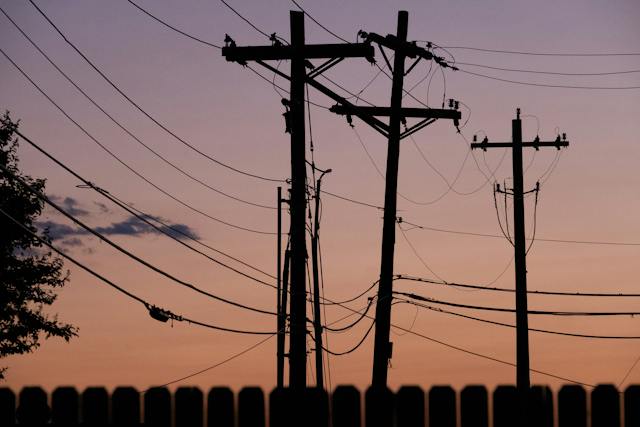Electricity has become an indispensable part of our modern lives, powering everything from our homes to our industries. One of the key components of our electrical infrastructure is the power grid, a complex network that delivers electricity from power generation sources to our homes and businesses. In this article, we will delve into the intricate process of how houses are connected to the power grid, exploring the various stages and components involved in this vital system.
The Power Generation Stage
Electricity’s expedition originates at power generation facilities, where a multitude of energy sources are harnessed to manufacture electricity. This assortment encompasses fossil fuels such as coal, natural gas, and oil, in addition to sustainable sources like hydroelectric, solar, wind, and geothermal power. Within these plants, the conversion of mechanical energy into electrical energy is achieved via generators. These mechanical marvels play a pivotal role in the process, transmuting the inherent power within these energy sources into the electric current that fuels our modern lives.
Transmission of Electricity
Once generated, electricity needs to travel great distances to reach the consumers. This is where the transmission stage comes into play. High-voltage transmission lines, often referred to as power lines or overhead lines, are used to efficiently transport electricity over long distances. These lines are typically made of high-strength materials like aluminum or steel and are supported by large towers or pylons. The high voltage is used to minimize energy losses during transmission, as higher voltages result in lower current and reduced resistance.
Substations: The Transition Points
While electricity journeys through the transmission lines, it comes across substations in its path. These substations act as points of transition, where the voltage undergoes conversion to enable seamless distribution. Within these installations, transformers are housed, tasked with reducing the elevated voltage carried by the transmission lines to a more suitable and lower voltage level for effective distribution. This transformation is critical for ensuring that the electricity can be safely and efficiently channeled into the intricate web of distribution networks, ultimately reaching homes and businesses with the power they require.
Distribution Networks
After leaving the substations, electricity enters the distribution networks, which comprise a complex web of power lines, transformers, and equipment that deliver electricity to individual homes and businesses. The distribution lines are generally of lower voltage compared to transmission lines, making them safer for close proximity to populated areas.
The Role of Transformers
Transformers are critical components in the distribution network. They serve two main purposes: stepping down the voltage for safe use and stepping up the voltage for long-distance transmission. Transformers located on utility poles or within substations reduce the voltage from the distribution lines to a level that can be safely used within homes and businesses.
The Final Leg: Service Lines
At this point, electricity is just a step away from reaching individual houses. Service lines, also known as service drops or service cables, are the final connection between the distribution network and homes. These lines are responsible for delivering electricity from utility poles to the buildings they serve. They consist of conductors insulated for outdoor use, ensuring safety and reliability.
The Electric Meter
Before electricity enters a house, it must be measured to accurately determine the amount of energy consumed. This is where the electric meter comes into play. The electric meter is typically located on the exterior of the house and records the amount of electricity used. This information is crucial for billing purposes and helps both consumers and utility companies keep track of energy consumption.
The Main Service Panel
From the electric meter, the electricity enters the house through the main service panel, also known as the distribution panel or breaker box. This panel contains circuit breakers or fuses that control the flow of electricity to various circuits within the house. Each circuit is responsible for supplying power to specific areas or appliances.
Circuit Breakers and Wiring
Circuit breakers play a vital role in ensuring the safety of electrical systems within homes. They are designed to interrupt the flow of electricity if there is a surge in current, a short circuit, or any other potentially hazardous situation. This helps prevent overheating, fires, and other electrical accidents.
The wiring within a house consists of conductors that carry electricity from the service panel to outlets, switches, and appliances. Different types of wiring are used based on the load requirements and the specific applications.
Outlets and Appliances
Electrical outlets and appliances are the endpoints of the electrical distribution system within a house. Outlets provide the interface for devices to be plugged in and powered, while appliances, lighting fixtures, and electronic devices utilize this electricity for various functions.
Safety Measures
The connection between houses and the power grid is not only about functionality but also safety. Grounding and insulation are crucial safety measures implemented in electrical systems. Grounding involves connecting electrical systems to the Earth’s conductive surface, which helps prevent shocks and reduces the risk of electrical fires. Insulation, on the other hand, ensures that electrical conductors are covered with non-conductive materials to prevent accidental contact and short circuits.
Modern Advancements and Smart Grids
As technology advances, so does the power grid. The concept of the smart grid has gained traction in recent years. A smart grid employs digital communication and advanced control systems to optimize the generation, distribution, and consumption of electricity. This enables better integration of renewable energy sources, improved energy efficiency, and enhanced reliability.
Conclusion
The journey of electricity from power generation plants to individual houses is a marvel of engineering and collaboration. The power grid, with its transmission lines, substations, transformers, distribution networks, service lines, electric meters, main service panels, circuit breakers, and outlets, ensures that the electricity we depend on for our daily lives reaches us reliably and safely. Understanding how houses are connected to the power grid not only enhances our appreciation for technology but also empowers us to use electricity efficiently and responsibly.
